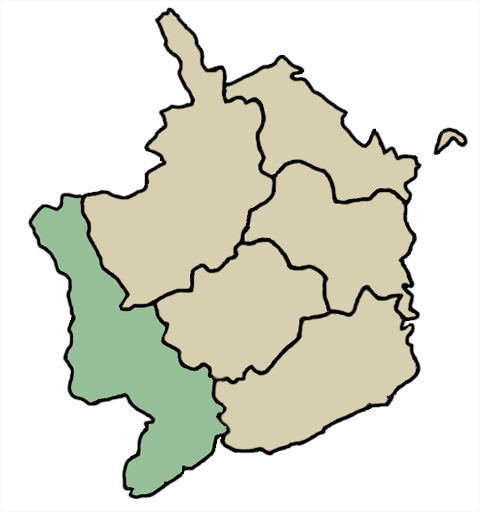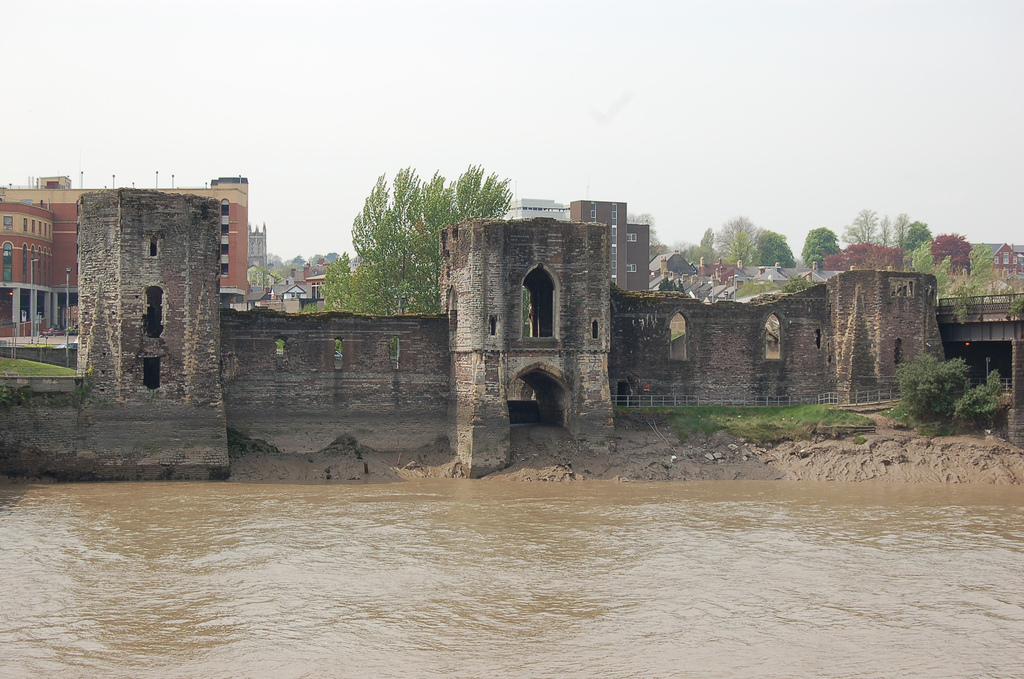|
Gwynllŵg
Gwynllŵg was a kingdom of Medieval Wales and later a Norman lordship and then a cantref. It is named after Gwynllyw, its 5th century and 6th century ruler. Location The place consists of coastal plain stretching between the Rhymney and Usk River, together with the hills to the north, the Commote of Machen. It was traditionally regarded as part of the kingdom of Glamorgan (), rather than that of Gwent which extended only as far westwards as the River Usk. However, under the Laws in Wales Acts of 1535–42, the cantref was included with those situated to the east, to form the new county of Monmouthshire. Wentloog and St. Woolos The name ''Gwynllŵg'' became a marcher lordship (alternatively called Newport). The name survives as ' Wentloog' in the Wentloog hundred and in villages on the coastal plain such as Peterstone Wentloog and St Brides Wentloog. The name Pillgwenlly for a district of central Newport also contains a corrupted version of this name. The Caldicot and ... [...More Info...] [...Related Items...] OR: [Wikipedia] [Google] [Baidu] |
Wentloog (hundred)
Wentloog (also known as Wentlloog and Wentllooge) was an ancient hundred of Monmouthshire. It was also known as Newport hundred. It was situated in the western part of the county, bounded to the north by Brecknockshire; on the east by the hundreds of Abergavenny, Usk and Caldicot; on the south by the Bristol Channel, and on the west by Glamorganshire. ''Wentloog'' is an anglicisation of the Welsh ''Gwynllŵg'', the name of the early kingdom and medieval ''cantref''. It contained the following ancient parishes: *Aberystruth *Bassaleg: consisting of Duffryn township, Graig hamlet and Rogerstone township *Bedwas *Bedwellty * Bettws *Coedkernew * Henllys * Llanfihangel Llantarnam *Llanhilleth *Machen * Malpas * Marshfield * Michaelston y vedw *Mynyddislwyn * Newport * Peterstone Wentlooge *Risca * Rumney * St. Brides Wentlooge * St. Mellons * St. Woolos The area is now administered by several local authorities, in particular Newport, Torfaen, Blaenau Gwent and Caer ... [...More Info...] [...Related Items...] OR: [Wikipedia] [Google] [Baidu] |
Kingdom Of Gwent
Gwent () was a medieval Welsh kingdom, lying between the Rivers Wye and Usk. It existed from the end of Roman rule in Britain in about the 5th century until the Norman invasion of Wales in the 11th century. Along with its neighbour Glywysing, it seems to have had a great deal of cultural continuity with the earlier Silures, Miranda Aldhouse-Green &al. ''Gwent In Prehistory and Early History: The Gwent County History'', Vol.1. 2004. . keeping their own courts and diocese separate from the rest of Wales until their conquest by Gruffydd ap Llywelyn. Although it recovered its independence after his death in 1063, Gwent was the first of the Welsh kingdoms to be overrun following the Norman conquest. History Establishment The area has been occupied since the Paleolithic, with Mesolithic finds at Goldcliff and evidence of growing activity throughout the Bronze and Iron Age. Gwent came into being after the Romans had left Britain, and was a successor state drawing on the cultur ... [...More Info...] [...Related Items...] OR: [Wikipedia] [Google] [Baidu] |
Wentloog
Wentlooge (), sometimes known as Wentloog, is a community in the southwest of the city of Newport, South Wales, in the Marshfield ward. The community includes Peterstone Wentlooge and St. Brides Wentlooge and in 2011 had a population of 737. Description The name Wentlooge is a corruption of the earlier name Gwynllŵg, said to have been named after Gwynllyw, its 5th - 6th century ruler. The community is bounded by Percoed reen to the northwest, the Ebbw River to the northeast, the Bristol Channel to the southeast and the South Wales Main Line to the southwest. It contains the hamlets of St Brides Wentloog and Peterstone Wentloog.Wentlooge Community Council Wentlooge Community Council homepage. Retrieved 18 March 2016. The [...More Info...] [...Related Items...] OR: [Wikipedia] [Google] [Baidu] |
St Brides Wentloog
St Brides Wentloog (also spelled St Bride's Wentloog or St Brides Wentlooge or simply St Bride's; ) is a hamlet to the south west of the city of Newport in South Wales. Location The hamlet lies in the parish of Wentlooge and electoral district (ward) of Marshfield. Like most of the settlements on the Wentloog Level it lies on land behind the sea wall, reclaimed from the Bristol Channel, and criss-crossed by large and small drainage ditches, known locally as reens. History The church of St Bride is dedicated to Saint Bridget. It is an ancient building, largely rebuilt in the 15th century, of stone in the Decorated and Perpendicular styles. It consists of chancel, nave, south porch and an unusually fine perpendicular embattled western tower housing six bells, four of which are dated 1734 and bear inscriptions. A plaque inside the porch marks the high-tide level of the Bristol Channel floods of 1607. The village was the birthplace of Lyn Harding David Llewellyn Ha ... [...More Info...] [...Related Items...] OR: [Wikipedia] [Google] [Baidu] |
Gwynllyw
Gwynllyw Filwr or Gwynllyw Farfog (), known in English in a corrupted form as Woolos the Warrior or Woolos the Bearded (; 450 – 500 CE) was a Welsh king and religious figure. He was King of Gwynllŵg in South Wales and is the legendary founder and patron saint of the City of Newport, living in the 5th century. According to medieval tradition, he was a feared warlord and lifestock raider who was acquainted with the mythical King Arthur, but later encountered religion and became a hermit, founding St Woolos Cathedral in Newport. He was the father of one of the most revered of Welsh saints, Saint Cadoc the Wise. Traditional history The medieval lives of Saint Cadoc (c. 1100) by Lifris and of Saint Gwynllyw (c. 1120)'Vita sancti Gundleii', Vitae sanctorum Britanniae et genealogiae, ed. A. W. Wade-Evans (1944), 172–93 preserve fabled details of Gwynllyw, though specifics frequently differ. He is also noted in Welsh king lists. The aforementioned descriptions of Gwynllyw no ... [...More Info...] [...Related Items...] OR: [Wikipedia] [Google] [Baidu] |
Peterstone Wentloog
Peterstone or Peterstone Wentlooge () is a small village to the south west of the city of Newport, South Wales. Location Peterstone Wentlooge lies six miles to the west of Newport city centre and 7½ miles east of Cardiff city centre. It lies in the community parish of Wentloog and electoral ward of Marshfield. History and amenities Like most of the settlements on the Wentlooge Level it lies on land reclaimed from the Bristol Channelbr> Peterstone itself lies right against the sea wallbr> an The former parish church, St Peter's Church, Wentlooge, St Peter's is now a private hous [...More Info...] [...Related Items...] OR: [Wikipedia] [Google] [Baidu] |
Monarchy
A monarchy is a form of government in which a person, the monarch, reigns as head of state for the rest of their life, or until abdication. The extent of the authority of the monarch may vary from restricted and largely symbolic (constitutional monarchy), to fully autocratic (absolute monarchy), and may have Political representation, representational, Executive (government), executive, legislative, and judicial functions. The Order of succession, succession of monarchs has mostly been Hereditary monarchy, hereditary, often building dynasties; however, monarchies can also be elective monarchy, elective and Self-proclaimed monarchy, self-proclaimed. Aristocracy (class), Aristocrats, though not inherent to monarchies, often function as the pool of persons from which the monarch is chosen, and to fill the constituting institutions (e.g. Diet (assembly), diet and Royal court, court), giving many monarchies oligarchic elements. The Legitimacy (political)#Monarchy, political legitim ... [...More Info...] [...Related Items...] OR: [Wikipedia] [Google] [Baidu] |
History Of Monmouthshire
History is the systematic study of the past, focusing primarily on the human past. As an academic discipline, it analyses and interprets evidence to construct narratives about what happened and explain why it happened. Some theorists categorize history as a social science, while others see it as part of the humanities or consider it a hybrid discipline. Similar debates surround the purpose of history—for example, whether its main aim is theoretical, to uncover the truth, or practical, to learn lessons from the past. In a more general sense, the term ''history'' refers not to an academic field but to the past itself, times in the past, or to individual texts about the past. Historical research relies on primary and secondary sources to reconstruct past events and validate interpretations. Source criticism is used to evaluate these sources, assessing their authenticity, content, and reliability. Historians strive to integrate the perspectives of several sources to develop ... [...More Info...] [...Related Items...] OR: [Wikipedia] [Google] [Baidu] |
Kingdoms Of Wales
Wales in the Middle Ages covers the history of the country that is now called Wales, from the departure of the Romans in the early fifth century to the annexation of Wales into the Kingdom of England in the early sixteenth century. This period of about 1,000 years saw the development of regional Welsh kingdoms, Celtic conflict with the Anglo-Saxons, reducing Celtic territories, and conflict between the Welsh and the Anglo-Normans from the 11th century. Early Middle Ages: 411–1066 When the Roman garrison of Britain was withdrawn in 410, the various British states were left self-governing. Evidence for a continuing Roman influence after the departure of the Roman legions is provided by an inscribed stone from Gwynedd dated between the late 5th and mid-6th centuries commemorating a certain Cantiorix who was described as a citizen (''cives'') of Gwynedd and a cousin of Maglos the magistrate (''magistratus''). There was considerable Irish colonisation in Dyfed, where there are ma ... [...More Info...] [...Related Items...] OR: [Wikipedia] [Google] [Baidu] |
History Of Newport, Wales
Newport ( ) is a city and county borough in Wales, situated on the River Usk close to its confluence with the Severn Estuary, northeast of Cardiff. The population grew considerably between the 2011 and the 2021 census, rising from 145,700 to 159,587, the largest growth of any unitary authority in Wales. Newport is the third-largest principal authority with city status in Wales, and sixth most populous overall. Newport became a unitary authority in 1996 and forms part of the Cardiff-Newport metropolitan area, and the Cardiff Capital Region. Newport has been a port since medieval times when the first Newport Castle was built by the Normans. The town outgrew the earlier Roman town of Caerleon, immediately upstream and now part of the city. Newport gained its first charter in 1314. It grew significantly in the 19th century when its port became the focus of coal exports from the eastern South Wales Valleys. Newport was the largest coal exporter in Wales until the rise of Car ... [...More Info...] [...Related Items...] OR: [Wikipedia] [Google] [Baidu] |
Newport, Wales
Newport ( ) is a city and Principal areas of Wales, county borough in Wales, situated on the River Usk close to its confluence with the Severn Estuary, northeast of Cardiff. The population grew considerably between the 2011 and the 2021 United Kingdom census, 2021 census, rising from 145,700 to 159,587, the largest growth of any unitary authority in Wales. Newport is the third-largest principal authority with City status in the United Kingdom, city status in Wales, and List of Welsh principal areas, sixth most populous overall. Newport became a unitary authority in 1996 and forms part of the Cardiff-Newport metropolitan area, and the Cardiff Capital Region. Newport has been a port since medieval times when the first Newport Castle was built by the Normans. The town outgrew the earlier Roman Britain, Roman town of Caerleon, immediately upstream and now part of the city. Newport gained its first Municipal charter, charter in 1314. It grew significantly in the 19th century when ... [...More Info...] [...Related Items...] OR: [Wikipedia] [Google] [Baidu] |





